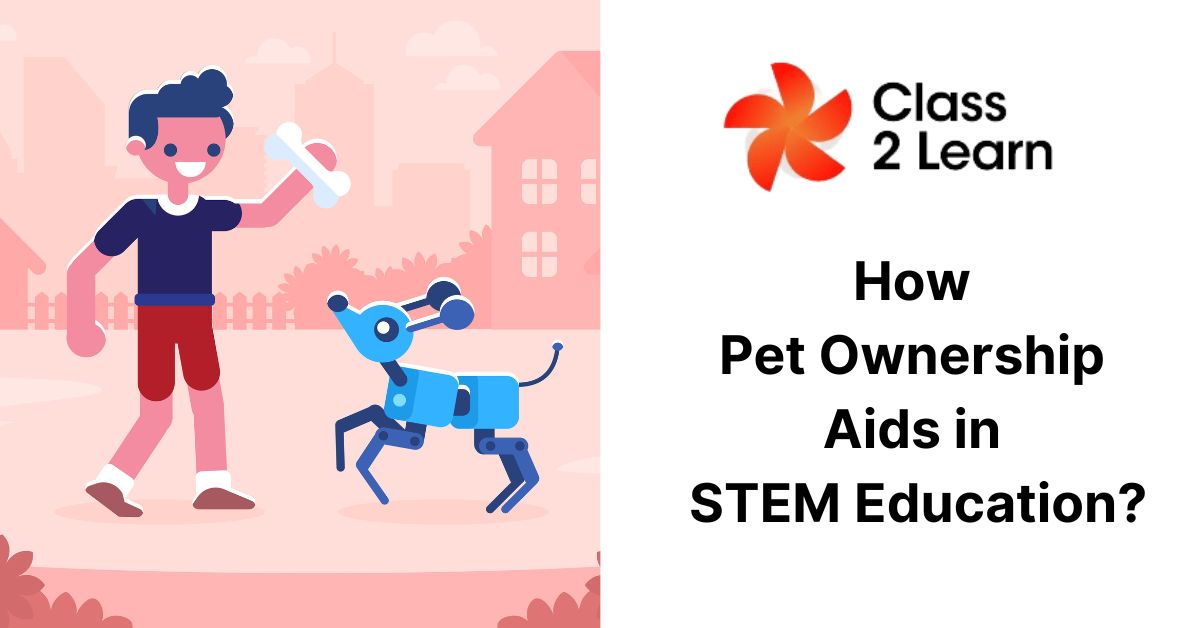
How Pet Ownership Aids in STEM Education?

Summer vacation means enough time for a new adventure! As an important element of STEM education and success, children need to learn independence and independent thinking. Many families are beginning to think about how summer can be used to help their children become self-reliant.
Adopting a pet is a great day for any family and it is a great pleasure to have a dog or cat in your life. Pets are great for many reasons, but it’s also a great way to get children of all ages, and adults, to get interested in science, technology, engineering, and math (STEM) learning. Whether you’re adopting a pet or looking for ways to increase classroom engagement, connecting with animals gives you a wealth of learning opportunities.
Pets can teach many important skills that promote overall independence. These include problem-solving, involvement, interaction, planning, and self-esteem.
How does Pet Care Benefit Children?
Many people intuitively understand that trying to nurture an animal is a positive educational experience for kids, and scientists have started to precisely assess these benefits. For instance, researchers from the University of Vienna discovered that having a dog at school increased students’ social participation and uniqueness while reducing their propensity for abuse. Huge social and emotional advantages come from having compassion for animals, including developing important traits like responsibility, integrity, and generosity.
Here are some suggestions for teaching STEM to pupils using pets:
Creating a Schedule:
Pets are a great motivation for establishing a routine in your home. Like an addict, your pet depends on you for regular feeding, exercise, bathroom breaks, and sleep arrangements. If your child’s memory or memory loss is the goal, your pet will issue an external alert if you are too far from your routine or schedule. You can also practice foresight, planning, and organizing by creating a pet schedule.
Sustaining Perseverance:
In the first few weeks or months, your child may be the most excited about pet ownership. This can be reflected in other activities that are exciting from the beginning but can diminish as the initial novelty disappears. Keeping a pet can foster dedication, patience, and longevity. It’s harder to ignore a pet at home than a semi-finished jigsaw puzzle!
Effective Communication and Interpersonal Skills:
Having to meet new people has never been easier than when accompanied by a pet. Pets can serve as a link to your society, letting your children make new friends and making an effort to communicate with others. Even if a pet is not present in the room, your children may find it a pleasant topic to discuss with best friends or new people when bonding and discovering commonalities.
Increasing Self-Esteem:
One of the most crucial objectives for children is to develop self-confidence and self-esteem. Having a pet in your home is a great way of developing this because animals are naturally non – judgmental and serve as a unique case of love and devotion.
Vacation Outdoors:
The benefits of being outside for both children and adults have been well documented. Many pets enjoy, if not require, regular outdoor time. Pet ownership includes a free, and frequently daily ticket to nature. Pets can also help children who struggle with the unstructured playtime that comes with being outside and may take a “what now?” approach to go outside. A pet can help you feel inspired to plan fun outdoor activities.
Empathy and Attunement Development:
Compassion and connectedness are essential building blocks in STEM performance indicators such as point of view, trying to connect dots, interacting, and collaborating. When a pet is associated, these skills can be efficiently handled because children can practice reading a pet’s moods and energy. Human body dialects can be hard to read. Educating your children on simple signs of your pet’s body posture, such as a wagging tail or hiss, is indeed a great way to get them to begin looking for, and responding correctly to body hints from someone in group settings.
Enhancing Security Awareness:
We, as adults, are frequently, if not always, solely responsible for our children’s safety. When a child takes responsibility for caring for a pet, they quickly realize that their pet is completely reliant on them for safety. This role can naturally lead to children seeing and thinking about their surroundings in a different light, concerned that their pet is well cared for. These skills can be practiced with a pet and then transferred to their safety as children grow older.
Conclusion:
Finally, keeping a pet can help children build many important skills that can be a building block for independence and STEM education success. There are many options when choosing the type of pet that suits your family’s lifestyle. If you want to help your child develop their skills this summer, you may consider adding pets to your home!





